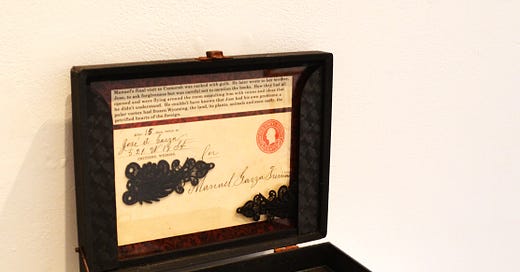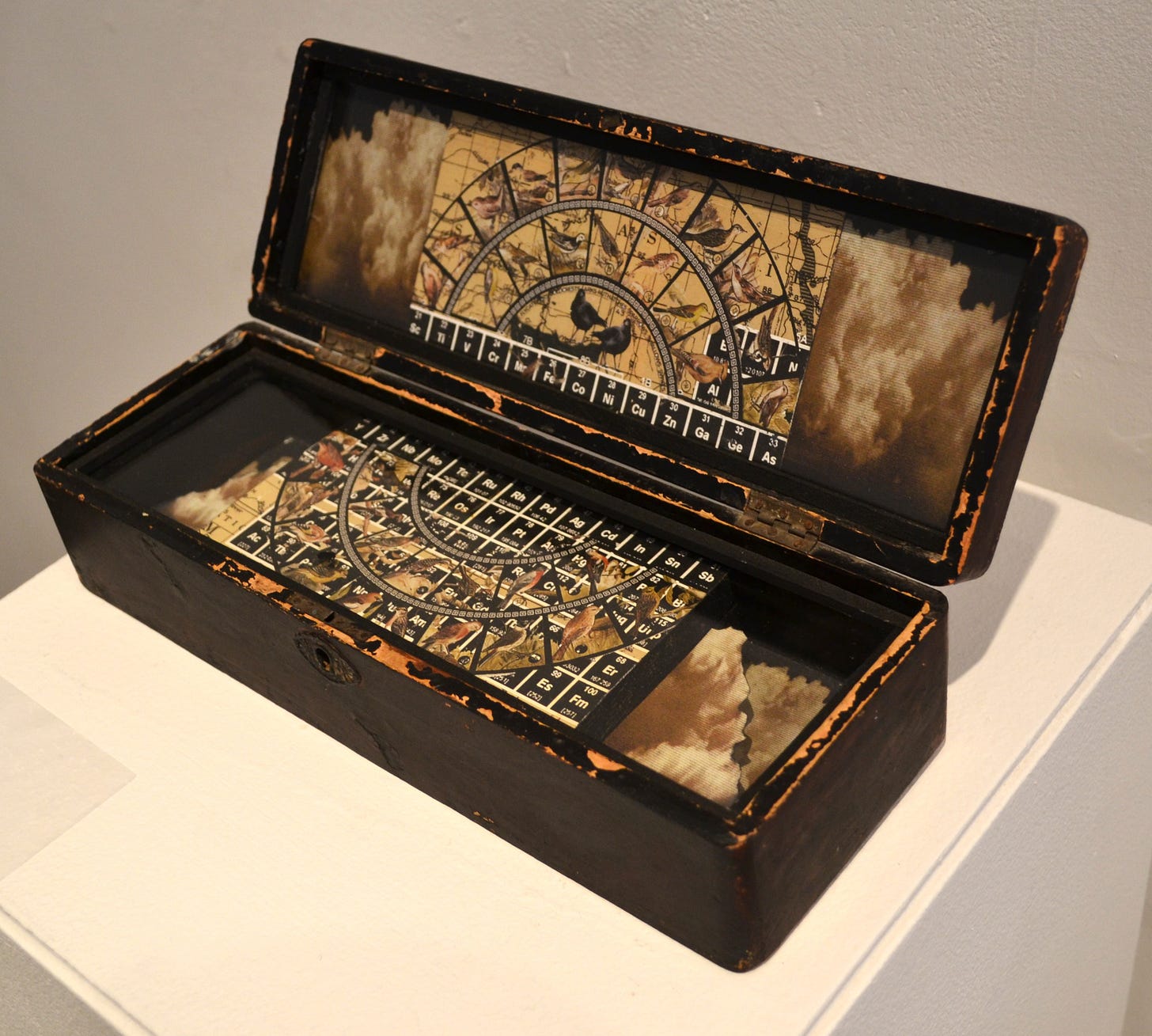San Antonio artist Ward Sanders makes darkly stained wooden boxes. Some of his boxes have little chambers within, but not all of them. There are always objects in the box—glass objects that look like antique lab equipment, bones and animal skulls, bits of wire, printed ephemera, tiny tools, etc. They are carefully arranged and displayed. The boxes are pretty small—at most the size of a briefcase. I think Sanders acquires these boxes from antique dealers, but he could be building them from scratch.
His work has a superficial resemblance to Joseph Cornell’s boxes. Sanders is an assemblagist like Cornell, and Sanders’ pieces are tributes to other forms of art—and one gets that feeling from Cornell as well. Cornell was entranced by ballet, a fascination that deeply informed his work. For Sanders, the inspiration is mostly literary. The fact that these two built their art partly in response to other, completely different artforms differentiates them from other assemblagists, like Wallace Berman or George Herms. Berman and Herms produced art much more visceral than the intellectual Cornell and Sanders.
Sanders’ work has often been directly influenced by whatever writer is recently on his mind, as in the exhibit Howling Fantods from 2015, a tribute to David Foster Wallace. Sander’s current show at Hooks-Epstein is called Piano Pieces because the main objects here are assemblages made from two disassembled pianos. This is a new direction for Sanders, but I want to talk about some of his boxes that are included in the exhibit. In this show, one of the pieces shares a title of a medieval Persian Sufi tale, The Conference of the Birds.
Keep reading with a 7-day free trial
Subscribe to The Great God Pan Is Dead to keep reading this post and get 7 days of free access to the full post archives.





